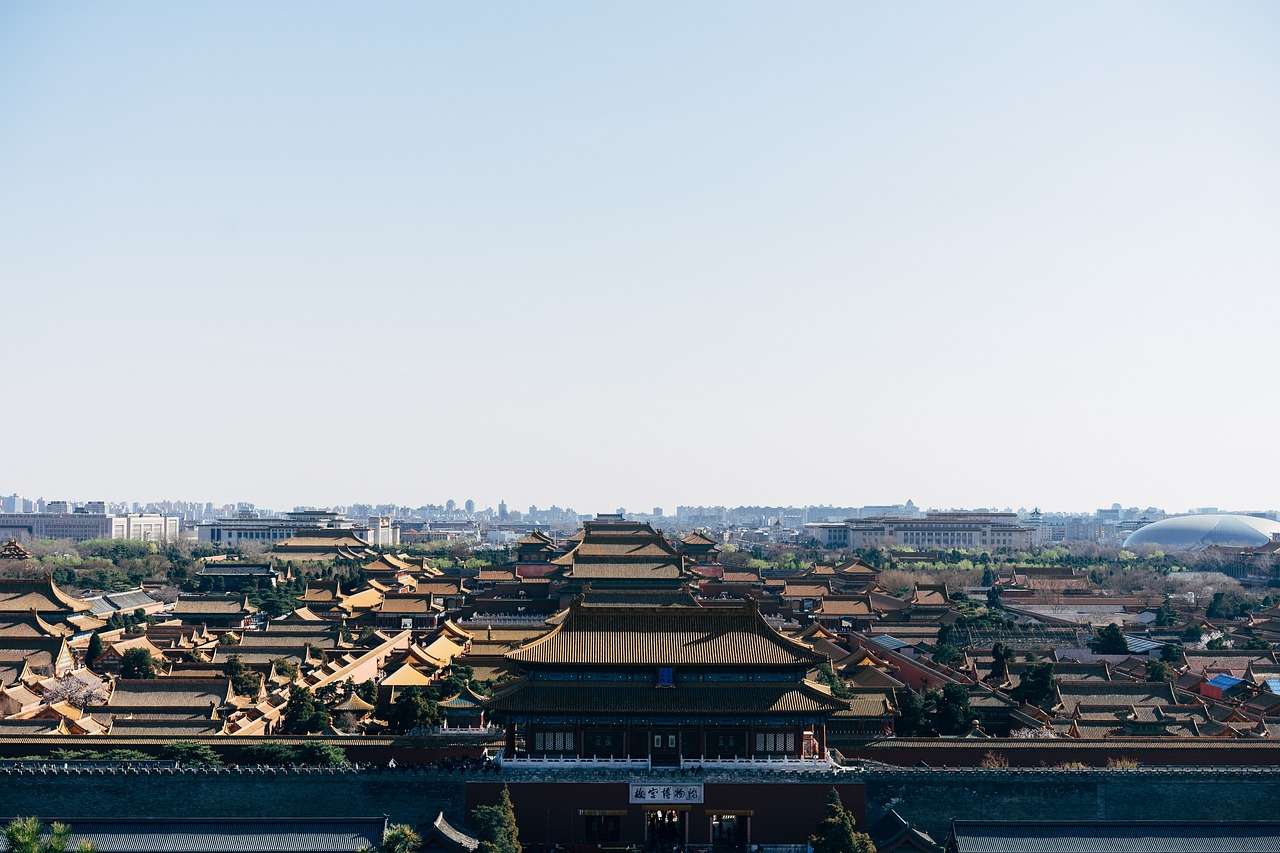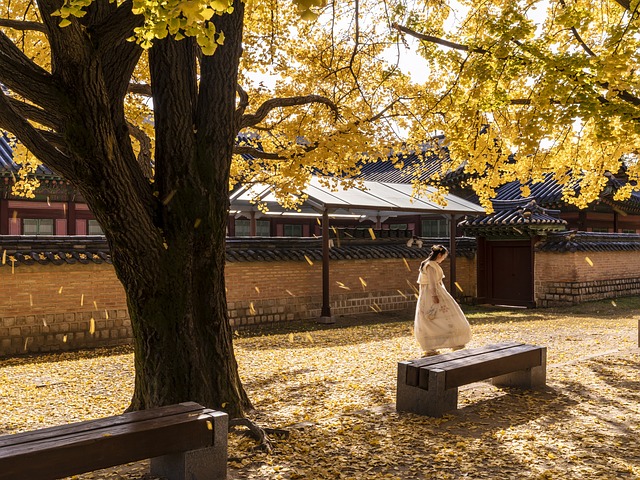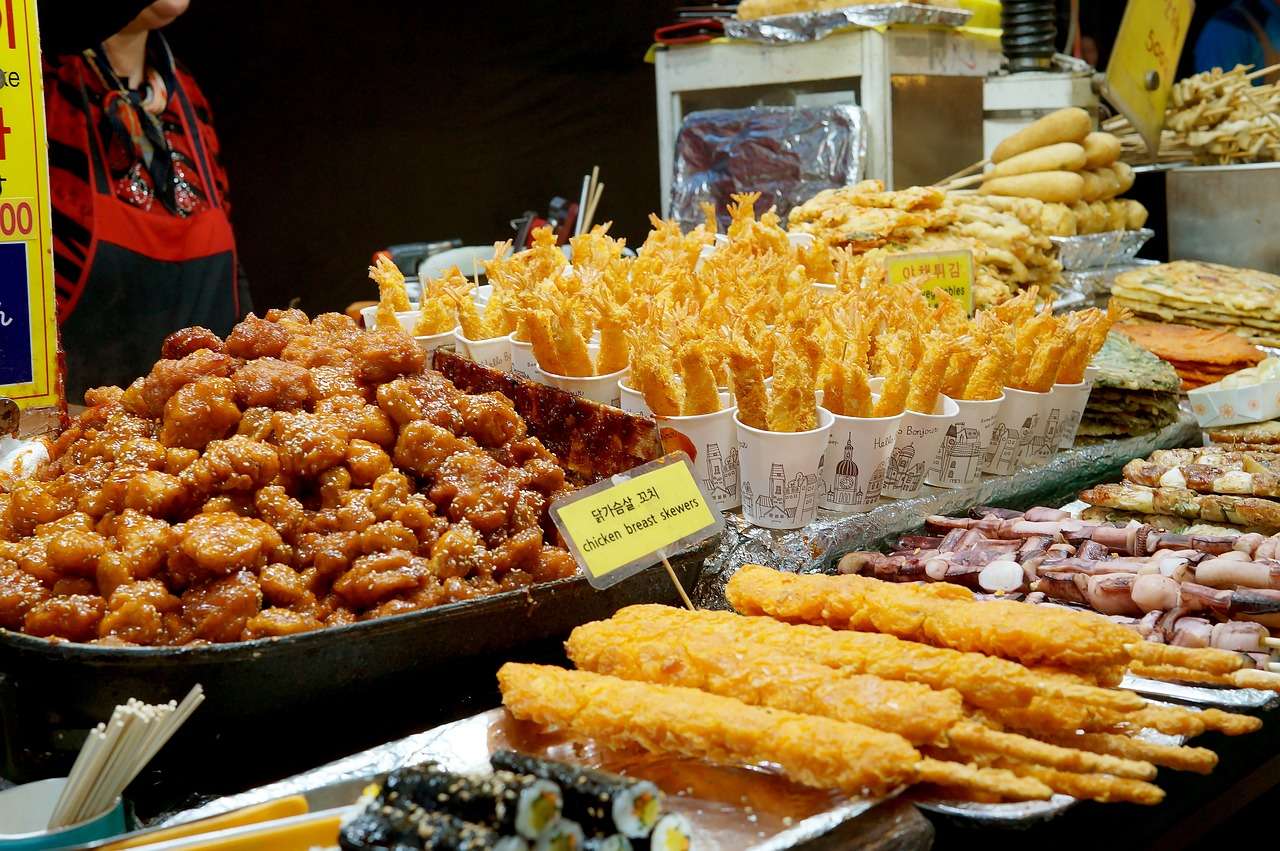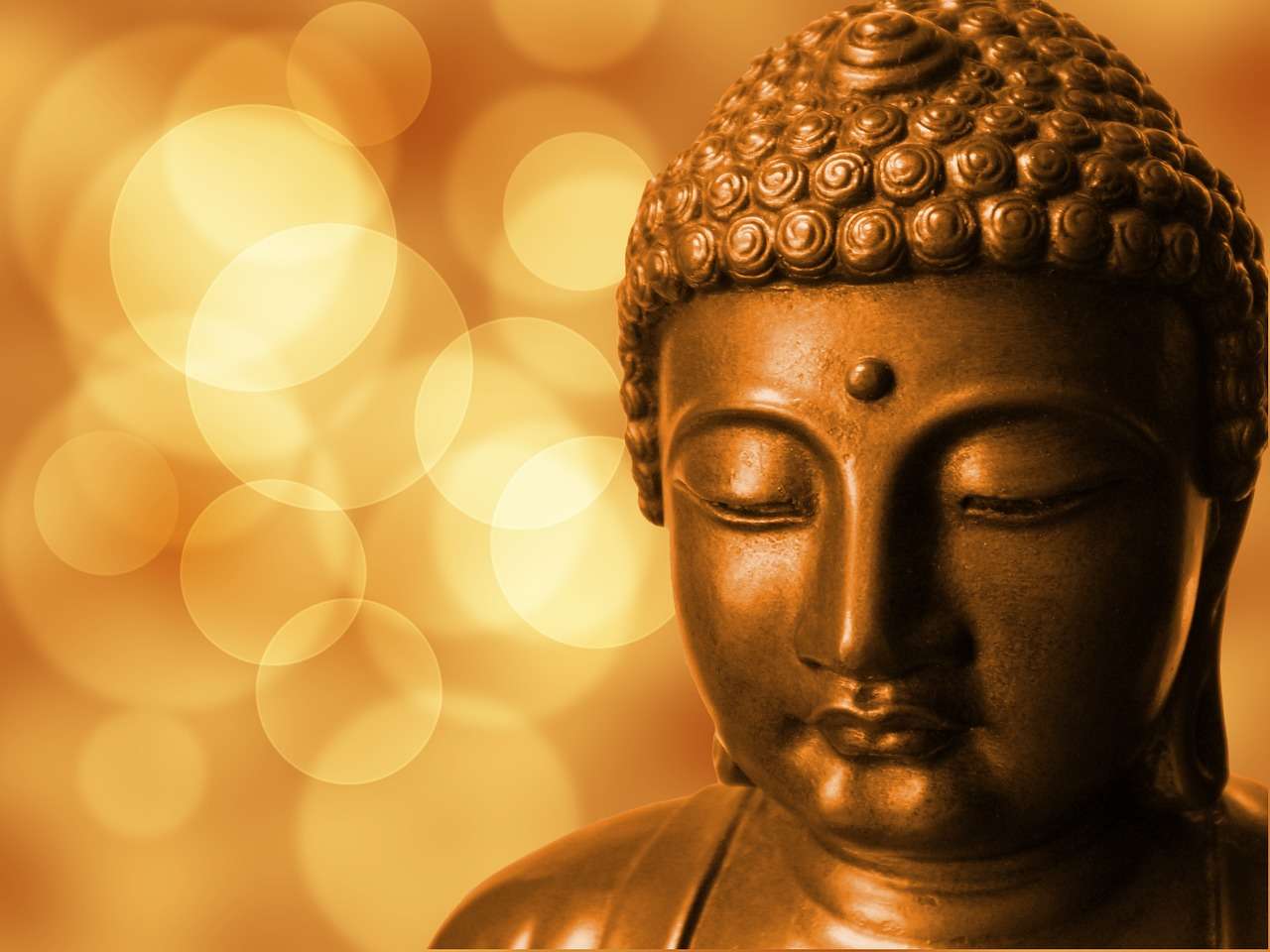The Song Dynasty, a pivotal era in Chinese history, left an indelible mark on the nation’s culture and society. In this article, we will embark on a captivating journey to explore how the Song Dynasty looked, delve into the lives of its people, unravel the intricacies of its social culture, and unearth the myths that continue to enchant us today. Join us on this remarkable voyage through time.
Table of Contents
- Introduction
- The Aesthetics of the Song Dynasty
- Everyday Life in the Song Dynasty
- Homes and Architecture
- Clothing and Fashion
- Cuisine and Dining
- Social Hierarchy and Structure
- The Imperial Court
- Scholar-officials
- Peasantry and Artisans
- Merchants and Trade
- Art and Innovation
- Painting and Calligraphy
- Inventions and Technology
- Cultural Influences
- Literature and Poetry
- Confucianism and Buddhism
- Mythical Tales and Legends
- The Legend of the White Snake
- The Butterfly Lovers
- Decline and Legacy
- Conclusion
- FAQs
Introduction
The Song Dynasty, spanning from 960 to 1279 AD, was a time of great change and prosperity in China. Nestled between the Tang and Yuan Dynasties, the Song era is often remembered for its remarkable achievements in various fields, including art, science, and governance. Let’s begin our exploration by understanding the aesthetics that defined this splendid period.
The Aesthetics of the Song Dynasty
The Song Dynasty, which lasted from 960 to 1279 AD, was a period in Chinese history renowned for its rich and distinctive aesthetic sensibilities. During this era, there was a strong emphasis on elegance, refinement, and a deep connection with nature, which greatly influenced various aspects of Chinese culture and art.
- Delicate Landscapes: One of the prominent features of Song Dynasty aesthetics was the depiction of delicate landscapes in various forms of art, particularly in painting and poetry. Artists of this era sought to capture the tranquil beauty of nature, showcasing rolling hills, serene rivers, misty mountains, and blossoming flowers. These landscapes were often rendered with great attention to detail, showcasing the natural world’s harmony and subtlety.
- Intricate Porcelain: The Song Dynasty is also renowned for its advancements in ceramics and porcelain. Artisans during this time developed innovative techniques that allowed them to create exquisitely delicate and refined porcelain wares. These porcelain pieces were not only functional but also served as works of art. The delicate and translucent quality of Song porcelain, often adorned with intricate patterns and designs, reflected the dynasty’s aesthetic ideals.
- Graceful Poetry: Poetry was another medium through which the aesthetics of the Song Dynasty were expressed. Poets of this era, such as Su Shi (also known as Su Dongpo), crafted verses that celebrated the beauty of the natural world and the fleeting moments of life. Their poetry often conveyed a sense of tranquility, introspection, and an appreciation for the subtle details of existence.
Overall, the aesthetics of the Song Dynasty emphasized a deep reverence for nature and a desire to capture its beauty in various art forms. This appreciation for the elegance and refinement in both the natural world and human creations left a lasting impact on Chinese culture, influencing subsequent dynasties and continuing to be celebrated in modern China. The Song Dynasty’s legacy in the realm of aesthetics remains a testament to the enduring power of art and beauty to transcend time and connect us to the past.
Everyday Life in the Song Dynasty
Homes and Architecture
During the Song Dynasty, architecture was not merely about constructing buildings; it was a profound expression of the Chinese philosophy of harmony with nature. This philosophy permeated every aspect of life, and it was particularly evident in the design and construction of homes and buildings.
Architectural Features:
- Wooden Structures: Unlike many other cultures that used stone or brick extensively in their architecture, the Song Dynasty favored wooden structures. This choice was not only practical but also aligned with their belief in living in harmony with the natural world. Wood, being a renewable resource, was abundant in China and allowed for flexibility in design.
- Sweeping Roofs: One of the most distinctive features of Song Dynasty architecture was the use of sweeping, curved roofs. These roofs not only added an aesthetic charm but also served practical purposes. The curved design helped with rainwater drainage and prevented the accumulation of snow in colder regions.
- Intricate Carvings: Attention to detail was paramount in Song Dynasty architecture. Elaborate carvings adorned the beams, pillars, and doorways of buildings. These carvings often depicted scenes from nature, mythology, or Confucian ideals, adding both artistic and cultural significance to the structures.
- Serene Gardens: Song Dynasty homes were often surrounded by serene gardens. These gardens were meticulously designed to create a sense of tranquility and balance. Ponds, rocks, bonsai trees, and carefully arranged plants were common elements. They provided a peaceful retreat for the residents and also reflected the Chinese appreciation for nature’s beauty.
Harmony with Nature:
The emphasis on harmony with nature was not limited to the physical design of buildings. It extended to the placement of homes within the landscape. Song Dynasty architects carefully chose locations that offered scenic views and were in tune with the surrounding environment. This holistic approach to architecture aimed to create a seamless connection between the human-made and natural worlds.
Tranquil Living Spaces:
Houses in the Song Dynasty were not just places to live; they were sanctuaries where people could find solace from the chaos of the outside world. The use of wood, the incorporation of gardens, and the attention to detail in design all contributed to the creation of tranquil living spaces. It was a reflection of the Song people’s desire for a peaceful and balanced life.
In summary, homes and architecture during the Song Dynasty were a testament to the Chinese philosophy of harmony with nature. They featured wooden structures, sweeping roofs, intricate carvings, and serene gardens, all of which were meticulously designed to create not only functional spaces but also places of beauty and tranquility. This approach to architecture continues to inspire and influence modern design in China and beyond.
Clothing and Fashion
During the Song Dynasty, clothing played a significant role in reflecting not only the fashion trends of the time but also the values and ideals of Chinese society. The clothing of this era was characterized by its simplicity and elegance, which were highly valued.
Layered Silk Garments:
One of the defining features of Song Dynasty clothing was the use of silk, a luxurious and highly sought-after fabric. People from various social classes, including the aristocracy and commoners, wore silk garments. These garments were often layered, consisting of multiple pieces that were carefully coordinated to create a harmonious and graceful look.
Influence of Confucian Ideals:
Confucianism, a prominent philosophical and ethical system in ancient China, had a significant impact on various aspects of life during the Song Dynasty, including fashion. Confucian ideals emphasized virtues such as modesty, humility, and respect for tradition. These principles influenced the way people dressed during this period.
Modesty and Grace:
The clothing of the Song Dynasty was designed to reflect Confucian values. It was characterized by a sense of modesty and simplicity. Men typically wore long, loose robes with wide sleeves, while women’s attire featured elegant, flowing silhouettes. The emphasis was on concealing the body rather than revealing it.
Color and Embroidery:
The color of clothing during the Song Dynasty was also significant. Bright and bold colors were generally avoided in favor of more subdued tones like blues, greens, and soft pastels. These colors were thought to convey a sense of refinement and harmony with nature. Embroidery, often featuring intricate patterns and designs, added a touch of artistry to the garments.
Accessories and Hairstyles:
Accessories played a vital role in completing an individual’s ensemble. Both men and women wore various accessories, including headdresses, belts, and jewelry, to enhance their outfits. Hairstyles were also carefully styled, with elaborate hairpins and ornaments being used to adorn the hair.
In summary, the clothing and fashion of the Song Dynasty were characterized by simplicity, elegance, and a strong influence of Confucian ideals. These garments reflected not only the aesthetic preferences of the time but also the cultural values and social norms of Song Dynasty society.
Cuisine and Dining
The Song Dynasty was a remarkable period in Chinese history when culinary arts and dining experiences reached new heights. This era saw a significant evolution in the way people prepared, cooked, and enjoyed their meals, with a strong emphasis on flavor, aesthetics, and cultural significance.
- Diversity in Food: Song Dynasty cuisine was renowned for its diversity. The empire’s vast geography allowed for an abundance of ingredients to be used in cooking. This diversity in ingredients gave rise to a wide range of flavors, textures, and dishes.
- Tea Culture Thrived: One of the most significant developments during the Song Dynasty was the flourishing of tea culture. The Chinese had been cultivating and drinking tea for centuries, but during this period, the preparation and consumption of tea became an art form. People enjoyed various types of tea, and elaborate tea ceremonies became common.
- Stir-Fried Vegetables: Stir-frying was a cooking technique that gained popularity during the Song Dynasty. This method involved quick cooking over high heat, which preserved the color, texture, and flavor of vegetables. Stir-fried dishes included a wide array of vegetables, often seasoned with soy sauce, ginger, and garlic.
- Rice as a Staple: Rice was a staple food in the Song Dynasty. It was not only consumed plain but also used to create a multitude of rice-based dishes. People enjoyed various types of rice, such as white rice, glutinous rice, and wild rice, in different preparations.
- Delectable Desserts: Desserts were an essential part of Song Dynasty cuisine, and rice cakes were a popular sweet treat. These cakes were made from glutinous rice and came in various shapes and flavors. Some were stuffed with sweet fillings, while others were steamed and served with honey or fruit.
- Influence on Modern Cuisine: Many culinary innovations from the Song Dynasty continue to influence modern Chinese cuisine. Stir-frying, tea culture, and the use of rice as a staple are practices that persist to this day, demonstrating the lasting impact of this era on Chinese food culture.
- Dining Etiquette: Dining in the Song Dynasty was not just about the food; it was also a social and cultural experience. Proper dining etiquette was observed, and meals were often enjoyed with family and friends. The use of elegant porcelain and tableware was common, adding to the aesthetic appeal of dining.
In conclusion, the Song Dynasty’s cuisine and dining culture were marked by their diversity, sophistication, and influence on subsequent generations. The emphasis on flavor, the appreciation of tea, the art of stir-frying, and the use of rice as a staple are all legacies of this remarkable era that continue to shape Chinese culinary traditions today.
Social Hierarchy and Structure
The Imperial Court
The Imperial Court was the highest authority in the Song Dynasty and held a central role in governing the empire. At its zenith, it was presided over by the emperor, who was considered the Son of Heaven and held immense power and responsibility.
The Emperor’s Role
The emperor’s role was not just ceremonial; they played a crucial part in the administration of the realm. They made important decisions, set policies, and were expected to uphold the moral and ethical values of Confucianism, which was the dominant ideology of the time.
The Bureaucracy
Supporting the emperor were a vast network of officials and bureaucrats. These individuals were responsible for the day-to-day governance of the empire. They managed various aspects of the government, including taxation, law enforcement, and public works.
Civil Service Exams: A Meritocratic System
One of the most significant innovations of the Song Dynasty was the introduction of the civil service examination system. This system aimed to select government officials based on their merit and competence rather than their social status or family background.
How It Worked
The civil service exams were rigorous and highly competitive. They were divided into multiple levels, starting with the county-level exams and progressing to the provincial and imperial exams. These exams tested candidates on a wide range of subjects, including Confucian classics, literature, and history.
Merit-Based Selection
What made this system revolutionary was that it allowed scholars from all social backgrounds to participate. As long as a candidate possessed the necessary knowledge and skills, they had the opportunity to pass the exams and secure a government position. This merit-based approach helped to bring fresh talent into the bureaucracy and promoted a sense of fairness in the selection process.
The Rise of Scholar-Officials
As a result of this system, a new class of scholar-officials emerged. These individuals were highly educated and well-versed in Confucian principles. They played a pivotal role in the administration of the empire and were often tasked with governing regions, overseeing public projects, and implementing policies.
Legacy and Impact
The civil service examination system of the Song Dynasty had a profound impact not only on Chinese governance but also on the broader concept of meritocracy in the world. It laid the foundation for a bureaucracy that was highly educated and focused on the well-being of the people. This system continued to be refined and used throughout Chinese history, setting an example for future dynasties and governments.
In summary, the Imperial Court of the Song Dynasty, along with the civil service examination system, created a framework for effective governance that valued merit, knowledge, and competence over social status or privilege. This system played a pivotal role in shaping Chinese society and administration during the Song Dynasty and left a lasting legacy in the history of governance.
Scholar-officials
Scholar-officials, also known as “literati,” were a key component of the Song Dynasty’s governance structure. Their role and influence were deeply rooted in Confucian principles and the civil service examination system. Here’s a more detailed explanation of their contributions:
- Examination System: The Song Dynasty implemented a rigorous civil service examination system that allowed individuals to enter government service based on their merit rather than their social status or family background. This system was a departure from previous dynasties, where government positions were often hereditary. Scholar-officials were individuals who excelled in these examinations, showcasing their deep knowledge of Confucian classics, history, and governance.
- Confucian Values: Confucianism, a prominent philosophy during the Song Dynasty, emphasized the importance of ethical behavior, moral integrity, and social harmony. Scholar-officials were expected to embody these Confucian values and apply them in their administrative roles. Their knowledge of Confucian principles informed their decisions and actions, contributing to a more just and orderly society.
- Roles and Responsibilities: Scholar-officials held various positions within the government, ranging from local administrative roles to high-ranking positions in the imperial court. They were responsible for implementing government policies, collecting taxes, maintaining law and order, and ensuring the well-being of the population in their jurisdictions. Their dedication to public service and adherence to Confucian ethics were crucial in maintaining a stable and prosperous society.
- Education and Meritocracy: The civil service examinations were a pathway to government service, and scholar-officials were often highly educated individuals. Their roles were not hereditary, and anyone who passed the exams could potentially become a government official. This emphasis on meritocracy allowed for a more dynamic and capable ruling class.
- Influence on Policy: Due to their deep understanding of Confucianism and governance, scholar-officials had a significant influence on policymaking during the Song Dynasty. They played a key role in shaping government policies, advocating for reforms, and addressing societal issues. Their contributions helped foster cultural and intellectual growth.
In summary, scholar-officials in the Song Dynasty were intellectuals who combined their knowledge of Confucianism with a commitment to public service. They played a vital role in governing the dynasty, contributing to its stability, cultural flourishing, and ethical governance. Their dedication to meritocracy and adherence to Confucian values left a lasting legacy in Chinese history, shaping the administrative framework of subsequent dynasties and influencing Chinese society for centuries to come.
Peasantry and Artisans
During the Song Dynasty, the peasantry and artisans formed the backbone of the society and played crucial roles in the empire’s economic prosperity. Here’s a more detailed explanation:
Peasantry: The peasantry consisted of farmers and agricultural workers who toiled in the vast rural areas of the empire. Their primary occupation was farming, and they cultivated a wide range of crops, including rice, wheat, soybeans, and more. Rice, in particular, was a staple food in China and a significant part of their agricultural production. The efficient cultivation of rice was a key factor in the empire’s food security and economic stability.
Peasants worked tirelessly in the fields, following the seasonal rhythms of planting and harvesting. Their hard work ensured a steady food supply for the population, which was essential for the empire’s stability and growth. In addition to farming, some peasants were also involved in activities like animal husbandry, producing silk, and crafting household goods.
Life for peasants was often demanding, marked by long hours of labor and a strong connection to the land. They lived in villages and towns scattered across the countryside, forming tight-knit communities that relied on mutual support. Peasant life was deeply rooted in tradition, with rituals and customs tied to agricultural cycles and festivals.
Artisans: Artisans were skilled craftsmen and craftswomen who played a pivotal role in producing a wide array of goods. These artisans specialized in various crafts, including pottery, metalwork, textiles, woodworking, and more. They crafted intricate and beautiful items that were not only functional but also works of art.
Artisans worked in workshops and guilds, passing down their craft from generation to generation. Their skills and techniques were honed over years of practice, resulting in high-quality, sought-after products. Artisanal goods from the Song Dynasty were renowned not only within the empire but also in international trade, contributing to the dynasty’s economic prosperity.
The work of artisans extended beyond simple craftsmanship; they often infused their creations with cultural and artistic significance. For example, Song Dynasty ceramics are famous for their delicate and intricate designs, reflecting the aesthetics of the era.
In conclusion, the peasantry and artisans were integral to the Song Dynasty’s success. While peasants ensured a stable food supply and supported the agrarian economy, artisans added richness to the culture and contributed to the empire’s economic growth through their craftsmanship. Their combined efforts created a dynamic and thriving society during this remarkable period in Chinese history.
Merchants and Trade
During the Song Dynasty, which lasted from 960 to 1279 AD, China experienced a remarkable growth in commerce and trade. This era marked a significant shift in the Chinese economy, with merchants playing a central role in shaping the economic landscape of the dynasty.
- Prominence of Merchants:
The Song Dynasty witnessed a transformation in the social and economic status of merchants. Traditionally, merchants were considered one of the lower classes in Chinese society, as their wealth often came from trade rather than agricultural or scholarly pursuits. However, during the Song Dynasty, the economic reforms and policies initiated by the government elevated the status of merchants.
- Trade Routes Expansion:
One of the most notable developments during this period was the expansion of trade routes. The Song Dynasty was strategically located along the Silk Road, which facilitated the exchange of goods and ideas with distant lands such as Persia, India, and even as far as the Middle East and Europe. This facilitated the flow of not only commodities but also knowledge, art, and culture.
- Cultural Exchange:
The growth of trade routes allowed for extensive cultural exchange between the Song Dynasty and other regions. Foreign merchants and travelers brought with them new ideas, technologies, and products that enriched Chinese culture. This exchange was not limited to material goods; it also included the sharing of religious beliefs, philosophies, and artistic influences.
- The Role of Trade in Economic Prosperity:
Trade became a cornerstone of the Song Dynasty’s economic prosperity. The dynasty’s agricultural innovations, such as fast-ripening rice varieties, increased agricultural production. Surpluses of agricultural products were traded, leading to increased wealth and urbanization. Cities like Hangzhou and Kaifeng became bustling commercial centers.
- Government Support:
The Song government recognized the importance of trade and implemented policies that encouraged it. They established standardized currency, improved transportation infrastructure, and protected trade routes from bandits and pirates. These measures created a conducive environment for commerce to thrive.
- Influence on Art and Culture:
The cultural impact of trade was substantial. The exchange of art, literature, and religious beliefs between China and other regions led to a vibrant cultural scene. For example, Chinese art was influenced by Persian and Islamic styles, resulting in unique artistic expressions.
In summary, merchants and trade were integral to the success and vibrancy of the Song Dynasty. The expansion of trade routes and the increased prominence of merchants not only bolstered the economy but also enriched the cultural tapestry of the era. This era of flourishing commerce and cultural exchange is a testament to the enduring legacy of the Song Dynasty.
Art and Innovation
Painting and Calligraphy
The Song Dynasty was a time when Chinese painting reached new heights of sophistication and aesthetic refinement. This period is often referred to as a “golden age” for Chinese painting. Here’s what made it so special:
- Landscape Painting: Song Dynasty painters, particularly artists like Fan Kuan, are renowned for their landscape paintings. These artworks depicted the breathtaking beauty of China’s natural landscapes, from towering mountains to serene rivers and lush forests. Fan Kuan’s masterpiece, “Travelers among Mountains and Streams,” is a prime example. These landscape paintings were not just artistic expressions but also reflections of the Confucian belief in harmony with nature.
- Ink Wash Painting: Artists during the Song Dynasty perfected the use of ink wash painting, a technique that involved using varying shades of ink to create depth and perspective. This technique added a sense of tranquility and depth to their artworks, making them incredibly captivating.
- Emphasis on Detail: Song Dynasty painters paid meticulous attention to detail, capturing the nuances of the natural world with precision. Their brushwork was refined, and they often used fine lines and delicate shading to create intricate textures in their paintings.
Calligraphy:
Calligraphy is a highly regarded art form in Chinese culture, and it thrived during the Song Dynasty. Su Shi, also known as Su Dongpo, was one of the most celebrated calligraphers of this era. Here’s what made Song Dynasty calligraphy exceptional:
- Various Styles: Song Dynasty calligraphers developed and refined various styles of writing, each with its own unique beauty. These styles included regular script, cursive script, and seal script, among others.
- Emotion and Expression: Calligraphy in the Song Dynasty was not just about writing characters; it was a means of artistic expression. Calligraphers like Su Shi infused their works with emotion, using brush strokes to convey the mood and sentiment behind the words.
- Influence on Culture: Calligraphy was not limited to the world of art; it had a profound influence on Chinese culture. The beauty of calligraphy was appreciated in poetry, literature, and even in everyday life, where elegant writing was considered a mark of refinement and education.
In essence, the Song Dynasty elevated painting and calligraphy to the level of high art. These artistic expressions not only celebrated the natural world but also reflected the values and aesthetics of the time. Today, the masterpieces of Fan Kuan and Su Shi continue to inspire artists and art enthusiasts worldwide, serving as a timeless testament to the artistic achievements of the Song Dynasty.
Inventions and Technology
One of the most transformative inventions of the Song Dynasty was printing. This innovation is often credited to Bi Sheng, who invented movable clay type around the 11th century. This marked a significant departure from earlier woodblock printing methods, where each page had to be carved individually. Movable type allowed for the efficient printing of books and documents, making information more accessible to a broader audience.
The invention of printing had profound implications for education, culture, and the dissemination of knowledge. It facilitated the production of books on various subjects, including literature, philosophy, and science. As a result, literacy rates in China increased, and scholars had access to a wealth of information that enriched their studies.
Paper Money
The Song Dynasty is also renowned for introducing the concept of paper money, which revolutionized the economy. Prior to paper money, various forms of currency were used in China, including metal coins and commodity money. However, these had their limitations in terms of portability and convenience.
The Song Dynasty addressed these challenges by issuing the world’s first government-backed paper currency. These banknotes were initially used for large transactions, but they quickly gained acceptance for everyday commerce. The convenience of paper money led to increased trade and economic growth, fostering prosperity within the empire.
The Compass
Another technological marvel of the Song Dynasty was the magnetic compass. While the compass had been known in China for centuries, during the Song era, it underwent significant improvements. The compass consisted of a magnetized needle floating in a bowl of water, which always pointed in the north-south direction.
This invention revolutionized navigation, both at sea and on land. It allowed sailors to determine their direction accurately, making long-distance voyages safer and more reliable. Additionally, the compass had a profound impact on trade, as it facilitated the exploration of new routes and the expansion of commerce across the empire and beyond.
In summary, the innovations of printing, paper money, and the compass during the Song Dynasty were transformative for Chinese society and trade. Printing expanded access to knowledge, paper money streamlined the economy, and the compass revolutionized navigation and trade routes. These technological advancements not only enriched the cultural and intellectual landscape of China but also contributed to its economic prosperity and global influence.
Cultural Influences
Literature and Poetry
The Song Dynasty was a golden age for Chinese literature and poetry. During this remarkable period, poets and writers flourished, leaving behind a treasure trove of literary works that continue to inspire readers and scholars to this day.
Poets of Note: Li Bai and Du Fu
- Li Bai: Li Bai, also known as Li Po, is often regarded as one of the greatest poets in Chinese history. His poems are celebrated for their vivid imagery, emotional depth, and exploration of themes such as nature, love, and the human condition. Li Bai’s verses often conveyed a sense of wanderlust and a deep connection to the natural world. His romantic and adventurous spirit is beautifully captured in lines like:
“I raise my cup to invite the moon, Then turn to my shadow which makes three of us. Because the moon does not know how to drink, My shadow merely follows the movement of my body. The moon has brought the shadow to the field of wine, The practice of mirth should keep pace with spring. I start a song and the moon begins to reel, I rise and dance and the moon moves onward. While I’m still conscious let’s rejoice with one another, After I’m drunk let each one reel or reel.”
Li Bai’s poems often reflect a sense of spontaneity and a deep appreciation for the fleeting moments of life.
- Du Fu: Du Fu is another luminary in the world of Chinese poetry. Unlike Li Bai’s exuberance, Du Fu’s poetry is characterized by its introspection and social commentary. He was often hailed as the “Poet Historian” for his ability to capture the socio-political climate of his time. Du Fu’s works are marked by their deep empathy for the common people and a profound sense of duty. In one of his famous poems, he writes:
“An old man in his fifties, I’ve wandered for three years— Since Emperor Xuanzong’s abdication and flight. I rode out to see friends but can’t get back home; An official’s income buys wine, but my plough gives only tears.”
Du Fu’s poems often serve as historical records, providing insights into the challenges and aspirations of the society during the Song Dynasty.
Emotions and Spirit of the Time
The poetry of the Song Dynasty goes beyond mere words; it encapsulates the emotions, spirit, and ethos of the era. Poets of this period explored a wide range of themes, from love and nature to philosophical musings and social critiques.
The beauty of Song Dynasty poetry lies in its ability to transport readers to a bygone era, allowing us to feel the joys, sorrows, and complexities of life as experienced by people during that time. It serves as a window into the past, revealing the aspirations, struggles, and dreams of a society that continues to shape China’s cultural identity.
In conclusion, the literary and poetic contributions of the Song Dynasty, as exemplified by poets like Li Bai and Du Fu, are an integral part of China’s cultural heritage. They remind us of the enduring power of words to transcend time and capture the essence of the human experience.
Confucianism and Buddhism
Confucianism is an ancient Chinese philosophy that revolves around ethical and moral principles, emphasizing the importance of social harmony, family values, and respect for authority. During the Song Dynasty, Confucianism became the dominant ideology and played a central role in various aspects of society:
- Governance: Confucian principles were integrated into the imperial examination system, which determined who could serve in the government. Officials were expected to be well-versed in Confucian texts and adhere to Confucian values, such as benevolence, righteousness, and filial piety. This system promoted meritocracy and ethical governance.
- Education: The state-sponsored education system during the Song Dynasty focused heavily on Confucian teachings. Students were taught to uphold Confucian virtues and apply them to their lives.
- Social Structure: Confucianism reinforced the hierarchical structure of Song society, with an emphasis on respecting authority figures and maintaining social order.
- Morality: Confucian ethics played a crucial role in shaping individual behavior and moral values. People were encouraged to cultivate virtues and fulfill their roles in society with integrity.
Buddhism:
Buddhism, an ancient Indian religion that emphasizes spiritual development and enlightenment, also had a profound impact on Song Dynasty culture:
- Art and Aesthetics: Buddhist art and iconography greatly influenced Song Dynasty art and architecture. Buddhist temples and sculptures showcased intricate designs and serene imagery that became prominent in Chinese culture.
- Morality and Compassion: Buddhist teachings on compassion, karma, and the pursuit of inner peace resonated with many Song Dynasty intellectuals and commoners. These principles contributed to a sense of moral responsibility and kindness toward others.
- Syncretism: During the Song Dynasty, there was a blending of Confucianism, Daoism, and Buddhism known as “Three Teachings.” This syncretism allowed people to draw from various philosophical and religious traditions, creating a more diverse cultural landscape.
- Literature: Buddhist themes and stories often found their way into Song Dynasty literature and poetry. Writers and poets drew inspiration from Buddhist concepts, incorporating them into their creative works.
In summary, Confucianism and Buddhism were not only prominent belief systems but also powerful cultural and societal forces during the Song Dynasty. They influenced governance, art, morality, and even education, leaving an indelible mark on the era’s cultural landscape. The coexistence and interplay of these two philosophies contributed to the richness and complexity of Song Dynasty culture.
Mythical Tales and Legends
“The Legend of the White Snake” (白蛇传), also known as “Madame White Snake,” is a classic Chinese folk legend that has been captivating audiences for centuries. This tale is a poignant and tragic love story that transcends time and culture.
The story is set in Hangzhou, a picturesque city in eastern China, during the Song Dynasty (960-1279 AD). It revolves around two central characters:
- Bai Suzhen (白素贞): Bai Suzhen is a graceful and compassionate white snake spirit who has cultivated her spiritual powers over centuries. She takes on human form to experience life among humans.
- Xu Xian (许仙): Xu Xian is a kind-hearted and somewhat naive young scholar. He encounters Bai Suzhen in her human form and falls deeply in love with her. The two soon marry, blissfully unaware of Bai Suzhen’s true identity.
However, their love faces significant obstacles:
- Fa Hai (法海): A Buddhist monk and antagonist of the story, Fa Hai discovers Bai Suzhen’s true nature and endeavors to separate her from Xu Xian. He believes that their love is an affront to the natural order and must be extinguished.
- Tensions between Human and Spirit Worlds: The story explores the clash between the mortal world and the spirit realm, highlighting the challenges faced by supernatural beings attempting to assimilate into human society.
- Themes of Love and Sacrifice: At its core, the legend is a tale of forbidden love and the sacrifices individuals are willing to make for the sake of that love. Bai Suzhen’s love for Xu Xian is so profound that she is willing to defy the laws of the spirit world to be with him.
The legend has been adapted into various forms of Chinese opera, literature, theater, and even modern media. It has spawned countless retellings, including films, TV dramas, and novels, each adding its own unique twist to the timeless narrative.
One notable adaptation is the film “Green Snake” (青蛇) directed by Tsui Hark, which offers a fresh perspective on the classic tale. Additionally, “The Legend of the White Snake” remains a popular theme in Chinese culture, often depicted in traditional art forms like paintings and sculptures.
The enduring appeal of “The Legend of the White Snake” lies in its ability to touch on universal themes of love, sacrifice, and the struggle between the natural and supernatural worlds. It continues to enchant audiences and serves as a testament to the storytelling prowess of the Song Dynasty, leaving an indelible mark on Chinese folklore and culture.
“The Butterfly Lovers” is a classic Chinese legend that shares many similarities with Shakespeare’s “Romeo and Juliet.” It is a poignant and tragic love story that has captured the hearts of countless people in China and beyond.
The legend of “The Butterfly Lovers” is set in ancient China, during the Eastern Jin Dynasty (317-420 AD), and it revolves around the lives of two young individuals, Liang Shanbo and Zhu Yingtai.
Here’s a more detailed explanation of the story:
1. Zhu Yingtai’s Disguise: The tale begins with Zhu Yingtai, a young woman who is exceptionally intelligent and desires an education typically reserved for men. To achieve this, she disguises herself as a young man named Zhuang, enabling her to attend a school and befriend Liang Shanbo, a fellow scholar.
2. Close Friendship: Over time, Zhuang (Zhu Yingtai) and Liang Shanbo develop a deep and sincere friendship. They study together, share dreams, and become inseparable. Liang, unaware of Zhuang’s true identity, never suspects that his best friend is, in fact, a woman.
3. Unspoken Love: As the story progresses, it becomes clear that Zhuang has fallen deeply in love with Liang, but she cannot reveal her true feelings due to her disguise. Similarly, Liang feels an inexplicable closeness to Zhuang but is unaware of the true nature of his emotions.
4. Tragedy Strikes: The story takes a tragic turn when Zhuang’s parents arrange for her to be married to another man, Ma Wencai. Zhuang, unable to reveal her true identity or her love for Liang, agrees to the arranged marriage reluctantly.
5. Liang’s Realization: Only after Zhuang’s departure for her wedding does Liang discover her true identity. Shocked and devastated by the revelation, he rushes to stop the wedding, but it’s too late. Zhuang and Ma Wencai are already married.
6. Heartbreaking Ending: In a heart-wrenching conclusion, Liang’s emotions overwhelm him, and he falls seriously ill, unable to bear the pain of losing Zhuang. Upon hearing about Liang’s condition, Zhuang rushes to his side, and the two are finally reunited. However, it’s a bittersweet reunion, as Liang succumbs to his illness shortly after their meeting.
7. Transformation into Butterflies: In a mystical and supernatural twist, the spirits of Liang and Zhuang are said to transform into a pair of butterflies, forever entwined in their love for each other.
“The Butterfly Lovers” is not only a story of tragic love but also a tale of gender identity, societal constraints, and the enduring power of love that transcends even death. It has been adapted into various forms of Chinese art, including opera, literature, and film, and remains a beloved and culturally significant narrative in China.
Decline and Legacy
The Song Dynasty, though marked by numerous achievements and cultural flourishing, faced a series of challenges that ultimately led to its decline. These challenges can be broadly categorized into internal and external factors.
Internal Factors:
- Corruption: As with many empires throughout history, corruption seeped into the Song Dynasty’s bureaucracy. Some government officials were more interested in personal gain than in serving the empire’s interests, leading to inefficiency and mistrust.
- Economic Issues: Despite the dynasty’s economic prosperity, it also experienced inflation, partly due to the widespread use of paper money. This inflation eroded the value of the currency and affected the livelihood of common people.
- Political Instability: The Song Dynasty witnessed multiple changes in leadership and factional struggles within the imperial court. This political instability weakened the central authority’s ability to govern effectively.
External Factors:
- Military Threats: The Song Dynasty faced continuous military threats from neighboring states, most notably the Khitan Liao Dynasty in the north and the Jurchen Jin Dynasty in the northeast. These military conflicts strained the empire’s resources and territorial integrity.
- Mongol Invasions: The most significant external threat came from the Mongol Empire, led by Genghis Khan and his successors. The Mongol Invasions of the 13th century posed a severe challenge to the Song Dynasty, eventually leading to its downfall.
Legacy of the Song Dynasty:
Despite its eventual decline, the Song Dynasty left an enduring legacy that continues to influence China and the world to this day. Here are some key aspects of its legacy:
- Advancements in Technology: The Song Dynasty was a hotbed of innovation. Inventions such as printing, paper money, and the compass revolutionized Chinese society and had a profound impact on global history.
- Cultural Contributions: The Song Dynasty was a golden age of Chinese culture. It produced remarkable literary works, exquisite paintings, and elegant calligraphy that continue to inspire artists and scholars.
- Philosophical Influence: Confucianism and Buddhism played significant roles in shaping Song culture and values. These philosophies continue to influence Chinese society and ethics.
- Economic Prosperity: The Song Dynasty’s economic prosperity and trade networks contributed to the development of commerce and the growth of cities. This economic legacy laid the groundwork for China’s future economic power.
- Historical Significance: The Song Dynasty’s rise and fall are critical in understanding China’s history. Its achievements and challenges serve as lessons for scholars and policymakers alike.
Conclusion
The Song Dynasty stands as a testament to human creativity and innovation. Its impact on art, culture, and society continues to resonate in modern China. As we reflect on this remarkable era, we gain a deeper appreciation for the rich tapestry of Chinese history.
FAQs
- What were the major achievements of the Song Dynasty? The Song Dynasty excelled in art, science, governance, and culture. Notable achievements include advancements in painting, calligraphy, paper money, and the compass.
- How did Confucianism influence Song Dynasty society? Confucianism emphasized ethics, morality, and social harmony, which played a significant role in shaping the values and governance of the Song Dynasty.
- Tell us more about the Legend of the White Snake. The Legend of the White Snake is a classic Chinese tale of love, temptation, and sacrifice involving a human and a white snake spirit. It has been adapted into numerous plays, operas, and films.
- What led to the decline of the Song Dynasty? The Song Dynasty faced external threats, including invasions by the Mongols, which ultimately led to its decline and the rise of the Yuan Dynasty.
- How did the Song Dynasty contribute to Chinese cuisine? The Song Dynasty saw the development of diverse and flavorful cuisine, including the popularization of tea culture and various delicious dishes like stir-fried vegetables and rice cakes.









